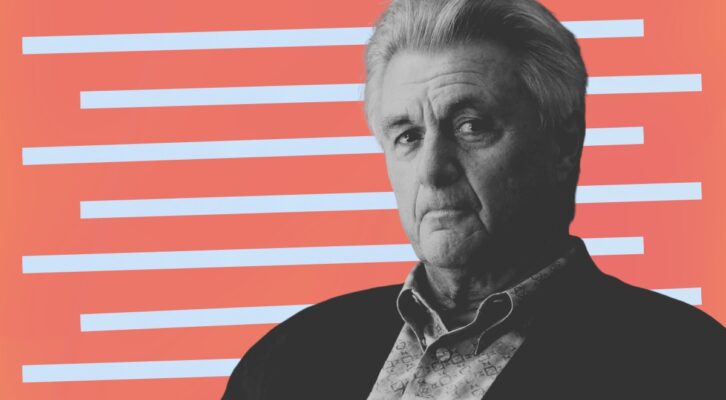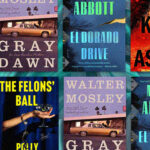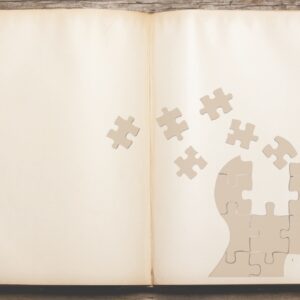
John Irving on Wrestling, Coming-of-Age, and Writing Autiobiographically
Wayne Catan Talks to the Author of Queen Esther
I have been reading John Irving’s novels since my undergraduate days at Syracuse University. One reason is that I wrestled for Syracuse, while Irving competed for the University of Pittsburgh, the New York Athletic Club, and the Hawkeye Club at the University of Iowa. Because of his mat acumen, his novels often feature realistic depictions of the sport, from lethal pinning combinations to high-amplitude throws. Irving also spent many years as a prep school wrestling coach.
Today, I am an English teacher and wrestling coach at Brophy College Preparatory in Phoenix, which makes his work resonate with me even more. His love for the sport is evident throughout his fiction and nonfiction, including The 158-Pound Marriage; The World According to Garp, where T.S. Garp is a wrestler, wrestling coach and writer; The Imaginary Girlfriend, his wrestling and writing memoir; and now Queen Esther.
Throughout his career, Irving has created provocative and memorable characters, including Roberta Muldoon, a transgender former NFL tight end in The World According to Garp; Owen Meany, the diminutive protagonist with a high-pitched voice in A Prayer for Owen Meany; and Dr. Wilbur Larch, the ether-addicted physician in The Cider House Rules. From these characters, Irving builds his novels, crafting narrative arcs rooted in political conflict, unconventional childhoods, and vivid scenarios shaped by his life.
In Queen Esther, Mr. Irving’s sixteenth novel, readers will recognize familiar themes: absentee or secretive fathers, enigmatic mothers, unusual birth circumstances, political conflict, identity exploration, and queer love. Irving returns us to Dr. Wilbur Larch and St. Cloud’s Orphanage in Maine, the setting of The Cider House Rules, where Esther Nacht, a three-year-old Vienna-born Jew whose mother is killed by an anti-Semite, is dropped off. She is adopted by the New England Winslow family and later becomes nanny to their daughter, ultimately repaying the Winslow family with the greatest gift of all: a child, Jimmy Winslow. Much of the novel, which spans seven decades, follows Jimmy, who moves to Vienna as a young man to study and search for his birth mother.
Irving’s virtuosity shines through in Esther’s fierce engagement with her Jewish heritage. We drift with the characters through the streets of Jerusalem and Vienna, where Jimmy lives with a local family and two college students as part of a study abroad program. There, he joins a wrestling club, navigates tangled love affairs, and encounters prostitutes. Like Dickens who inspired him, Irving evokes powerful emotion in Queen Esther, making this new novel unforgettable.
After our exchange of emails about the University of Iowa wrestling team (Irving graduated from and later taught at the Iowa Writers’ Workshop), he graciously agreed to an email interview with me about Queen Esther.
*
Wayne Catan: When did you realize you would return to Dr. Wilbur Larch and St. Cloud’s Orphanage in Maine?
John Irving: Larch is the main character in The Cider House Rules, although he is missing for many pages at a time; Larch is a hidden force, still driving the action, although it is Homer Wells, an orphan from St. Cloud’s, who is the novel’s POV character. Homer is a pretty passive character; even when Larch is missing from the action on the page, Larch is the one who makes everything happen.
In Queen Esther, Larch is a minor character. My Esther is the novel’s main character, although she’s missing for many pages, and for much of the action, Esther is making things happen. She is a behind-the-scenes puppet master. My Esther is purposely the embodiment of the Queen Esther she is named for—the Esther of the Hebrew Bible and the Christian Old Testament. Both in her hiddenness (she hides herself for so long!), then in the ferocious way she reveals herself (on her terms), I’m conscious of making my character a biblical reincarnation.
WC: Queen Esther features a familiar scenario in your work: a mysterious mother and an unknown, or secretive, father. Why does this dynamic continue to appeal to you?
JI: I’m often making use of my own childhood. I had a mom who’d given birth to me, but she and I were alone. I had my birth father’s name (John Wallace Blunt, Jr.), but I never saw him. In 1948, when I was six, my mom married Colin Irving, who legally adopted me. I was renamed Irving; I was happy to have the name of someone I could see, and I loved him. He recently died, at age 100, but he always knew why all the stepfathers in my novels are heroes—because he was my hero. I named my first child, Colin, after him.
My novels are ending-driven; I am writing toward a predetermined ending.
In my novels, I change my real story. My mom didn’t hide things from me; she was very clear. I knew my birth father had left her, and my mom told me he wasn’t allowed to contact me. He never tried to contact me; I learned later that he used to come to my wrestling matches, but they were public, and I never knew he was there. As a fiction writer, I’ve had a lot of fun imagining a more convoluted and much stranger story than my actual story.
WC: Esther Nacht is a remarkably strong character. Even at three years old, when she was dropped off at St. Cloud’s orphanage, she wasn’t upset. You write that “Esther doesn’t cry—she just gets angry,” a reaction that foreshadows the woman she becomes. How did Esther first take shape in your mind?
JI: I set poor Esther on a path, from her birth in Vienna in 1905, to the murder of her mother by antisemites in Portland, Maine, and including her years as an unadopted orphan at St. Cloud’s. By the time she’s a teenager, she is determined to make up for the Jewish childhood that was taken from her; there’s no stopping her.
This is a historical novel; it ends in Jerusalem in 1981, where and when Esther will be seventy-six. My novels are ending-driven; I am writing toward a predetermined ending. Where else would this angry three-year-old who doesn’t cry go? My Esther, who was unprotected, is also devoted to protecting the family who takes her in. She will protect Jimmy Winslow (her birth child) even when she’s not in the same country with him. And the foremost way Esther “protects” Jimmy is by never allowing him to be Jewish. His birth mom and birth dad are Jews; Jimmy is Jewish, but Esther won’t permit it. If anyone knows it’s not safe to be Jewish, Esther surely knows.
WC: Jimmy Winslow’s coming-of-age journey ultimately becomes the fulcrum of the novel. Much of that struggle centers on his evolving relationship with his Jewish identity. Could you talk about how you approached developing that aspect of Jimmy’s character?
JI: Both in Vienna in 1963-64, and in Jerusalem in 1981, Jimmy is what I call a “truthful exaggeration” of myself. Jimmy is even more unaware than I was! When I was an American student abroad in Vienna, my Jewish roommate opened my eyes to antisemitism. When I was first in Israel in 1981, when my former roommate was still alive—and when I was back in Jerusalem in 2024, after he’d died—he was always on my mind. Jimmy Winslow is my POV character. I wanted him to be an out-of-it POV character. That’s more fun!
I was first invited to Israel in April 1981 by the Jerusalem International Book Fair and my Israeli publisher. I accepted the invitation at the urging of my favorite European publishers; they were Jewish, with longstanding ties to Israel. They were leftist, nonobservant Jews who criticized the right-wing Likud government of Menachem Begin for accelerating the settlements in the West Bank. They thought the Jewish presence there, and in the Gaza Strip, might make Palestinian self-determination harder to achieve—they said then that a two-state solution to the Israeli-Palestinian conflict could slip away.
In my case, I had a happy childhood and adolescence; my real life would be a boring story!
A historical novel foreshadows the future. In April 1981, the seeds were sown for an eternal conflict. In July 2024, when I was back in Jerusalem, to refresh my memory of the visual details—going where I’d gone, forty-three years ago—the war in Gaza was ongoing. In the Muslim Quarter, there were no tourists on the Via Dolorosa—the Way of Sorrows, where Christ carried the cross to be crucified. No tourists in the Christian Quarter—not even at Christ’s tomb, in the Church of the Holy Sepulchre. In the evenings, most of my Israeli friends were at anti-Netanyahu protests.
In the last chapter of Queen Esther, set in Jerusalem in 1981, the dialogue mirrors what was said to me, or what I overheard. In a historical novel, the dialogue must also be what was commonly said in that time and place.
WC: In the novel, Jimmy receives advice from his grandfather, Thomas Winslow, an English teacher at Pennacook Academy: “It was okay for a novel to be loosely autobiographical. ‘The more loosely, the better.’” Your stepfather taught at Phillips Exeter Academy, and you wrestled and graduated from that prestigious boarding school. With that in mind, is it fair to say that Queen Esther draws from your own life?
JI: My own life is often reflected in a fictional character’s childhood and early adolescence, but what is autobiographical in my novels is only a stepping-off place, a launching pad to a better story. I mean “better” in the sense of “completely imagined.” In my case, I had a happy childhood and adolescence; my real life would be a boring story!
WC: Jimmy Winslow, who becomes a fiction author, writes The Dickens Man as an homage to his grandfather. Similarly, is Queen Esther your homage to Dickens? And how important is metafiction in shaping the novel’s meaning and impact?
JI: Yes, it is written in homage to Dickens! And how important is metafiction in shaping the novel’s meaning and impact? No, don’t ever call my novels metafiction! I’m a purposely old-fashioned and deliberately nineteenth-century novelist. Unlike metafiction, I’m not making a departure from novelistic conventions—I’m not writing parodies of naturalism. I’m consciously trying to imitate a Victorian novel!
There’s no comparable camaraderie among novelists or screenwriters; writing fiction is a lonely obsession.
Jimmy isn’t the first of my characters to be a writer, and he’s no less out-of-it for being a writer! As I say, Jimmy has an “intrinsic foreignness”; his foreignness is inside him. Many fiction writers feel there is a foreignness inside them; we are observers, more than we are participants. Fiction writers are born outsiders.
WC: Wrestling is in your DNA. Scenes of the sport are threaded throughout the novel, from team practices at Pennacook Academy to the Turnhalle Leopold Club in Vienna. You capture the essence of wrestling, from body lock throws at practice to how a wrestler can obtain a cauliflower ear. Yet it is the camaraderie among the Russian, Israeli, and Austrian wrestlers in Vienna that left a lasting impression on me. Is this why wrestling is such an important part of your life?
JI: It was an everlasting coincidence that becoming a wrestler happened to me at the same age I was when I knew I wanted to be a novelist. I read Charles Dickens’s “Great Expectations” when I was fifteen, the age I was when I started wrestling. These were parallel dedications, parallel disciplines. And I competed as a wrestler for twenty years, and coached wrestling until I was forty-seven. In wrestling, as in writing fiction, a tunnel vision is essential; you also have to be a workaholic.
Yes, there is a camaraderie among wrestling teammates. In my own case, I must have wrestled for so long because of the camaraderie; I certainly didn’t keep doing it because I was getting any better. There’s no comparable camaraderie among novelists or screenwriters; writing fiction is a lonely obsession.
Wayne Catan
Wayne Catan is a book critic who was raised on New York’s Long Island. A former Brooklyn resident, he currently teaches English literature at Brophy College Preparatory in Phoenix.



















